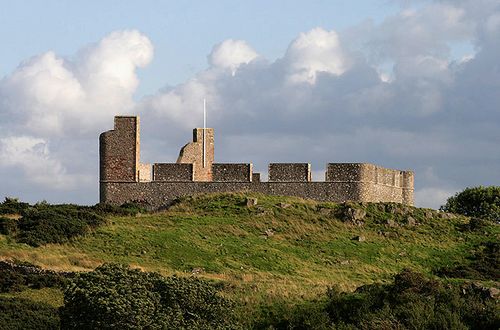Annotation:Hume Castle (2)
X: 1 T:Hume Caftle [2] M:4/4 L:1/8 Q:90 R:Reel B:Thomas Calvert Collection - Page 9 Z:Transcribed by Philip Whittaker H:Hume Castle - 6 miles North of Kelso was rebuilt as a folly by the H:Earl of Marchmont in 1794 - five years before the publication of this H:collection K:G c|BG (3Bcd ~B2 Bd | egdg BAAc | BGGc Bddg | e/2d/2c/2B/2 Ad BGG :|| c|Bddg egdg | BddB cAAc | Bddg egdg | Bgdg BGGc | Bddg egdg | BddB cAAc | Bdgb afdg | e/2d/2c/2B/2 Ad BGG ||
HUME CASTLE [1]. Scottish, Reel (whole time). G Major. Standard tuning (fiddle). John Glen (1891) finds the earliest printing in biography:Daniel Dow's (1732-83) A Collection of Ancient Scots Music for the Violin, Harpsichord, or German Flute never before printed (1775, Edinburgh, p. 20). A tune called "Hume Castle" also appears in the Thomas Calvert Collection of 1799. Calvert was a musician from Kelso, Scotland (near Hume), and a note with the collection states that Calvert supplied "a variety of music and instruments, instruments lent out, tun'd and repaired." Hume Castle was once the seat of the Hume/Home family, and the original structure dates from the 13th century. The medieval building was destroyed by Cromwell's artillery in 1651. In 1794 the Earl of Marchmont built a new castle on the same foundations, however, it appears that it was never completed (or only meant for show) and remained only a shell that may be seen today from Marchmont and other points in the border region between Scotland and England. The castle site commands exquisite views and was used as a lookout and beacon station from the Napoleonic Wars through World War II.

